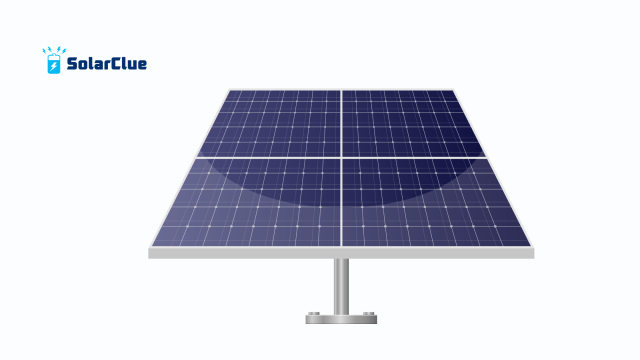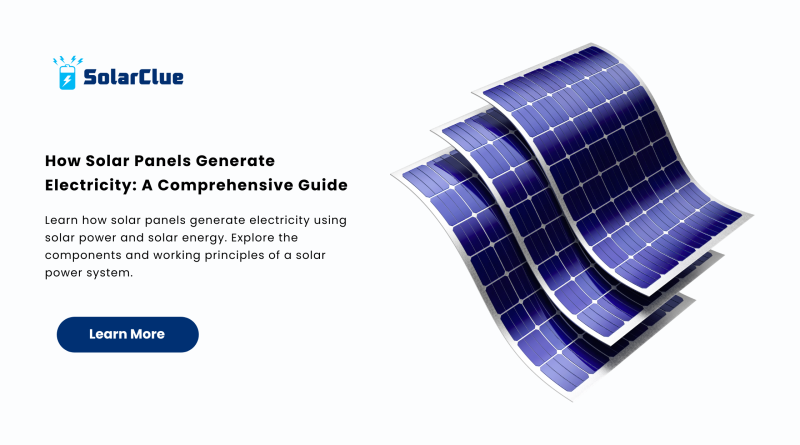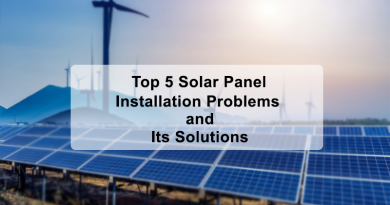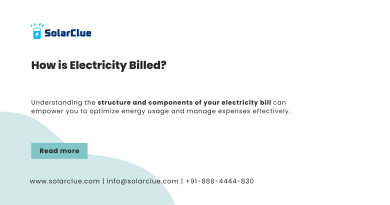How Solar Panels Generate Electricity: A Comprehensive Guide
Solar energy has become one of the most reliable and sustainable sources of energy globally. It’s a renewable energy source that harnesses the power of the sun to generate electricity, helping reduce dependency on fossil fuels and lower carbon footprints. In this blog post, we will dive deep into how solar panels generate electricity, exploring the working mechanism of solar panels and their role in a solar power system.
Table of Contents
What Are Solar Panels?
Solar panels are devices designed to convert sunlight into electrical energy. They are composed of numerous solar cells made of semiconductor materials, typically silicon, which capture solar energy and convert it into usable electricity. When sunlight hits the surface of these panels, it triggers the photovoltaic effect, which is the process that generates electricity.
How Do Solar Panels Work?
The Photovoltaic Effect: The Key to Solar Power
At the core of solar panels is the photovoltaic (PV) effect. When sunlight strikes the solar cells, it excites the electrons in the semiconductor material, causing them to flow through the material. This flow of electrons is what creates electricity. The more sunlight that hits the solar cells, the more electricity is generated. This process forms the basis of solar energy generation.
Solar Cells: The Building Blocks of Solar Panels
Each solar panel consists of multiple solar cells, and each solar cell is a combination of two layers of silicon. The top layer is positively charged, and the bottom layer is negatively charged. The junction between these two layers creates an electric field, enabling the movement of electrons when exposed to sunlight.
Converting DC to AC: The Role of Inverters
The electricity generated by solar panels is in the form of direct current (DC). However, most of the appliances and systems we use at home or in businesses run on alternating current (AC). To convert DC to AC, inverters are used. These devices transform the electricity into a form that can power everything from household electronics to industrial machines.
Components of a Solar Power System
A complete solar power system consists of several components that work together to harness, convert, and distribute electricity. Here’s a breakdown of these critical elements:
-
Solar Panels: These are the primary components that capture sunlight and convert it into DC electricity.
-
Inverter: Converts the DC electricity generated by the solar panels into AC electricity.
-
Charge Controller: Protects the battery from overcharging or deep discharge, ensuring its longevity.
-
Batteries (Optional): Store excess power generated during the day for use at night or during cloudy days.
-
Electrical Meter: Measures the electricity generated and consumed, ensuring accurate billing, especially in grid-tied systems.
Benefits of Solar Power Systems
Environmentally Friendly
The most significant advantage of solar power systems is that they help reduce greenhouse gas emissions, making them an eco-friendly energy solution. By using solar energy, you help minimize your carbon footprint and contribute to a cleaner planet.
Cost-Effective
While the initial cost of installing a solar power system can be substantial, the long-term savings on electricity bills make it a worthy investment. Moreover, the ongoing costs are minimal once the system is set up.
Energy Independence
Solar power allows individuals, businesses, and even communities to reduce their reliance on the grid, promoting energy independence. In remote areas, solar panels are especially beneficial as they provide an off-grid power solution.
Low Maintenance
After installation, solar panels require very little maintenance. Cleaning the panels periodically and ensuring the inverter is functioning properly is usually enough to maintain optimal performance.

Factors Affecting Solar Panel Efficiency
While solar panels are an excellent source of energy, their efficiency can be affected by various factors, including:
-
Location: The amount of sunlight received in your area is crucial. Locations with more sunny days typically generate more solar power.
-
Shading: Trees, buildings, and other structures can block sunlight, reducing the effectiveness of your solar power system.
-
Panel Orientation and Angle: The way solar panels are installed on your roof (their orientation and angle) can impact their efficiency.
-
Temperature: Extremely hot temperatures can reduce the efficiency of solar panels, as excessive heat may increase the resistance in the cells.
How to Maximize the Efficiency of Your Solar Power System
To get the most out of your solar power system, consider the following tips:
Proper Installation
Ensure that your solar panels are installed correctly, with proper tilt and orientation. It is advisable to seek professional installation services to maximize performance.
Regular Maintenance
Clean the solar panels regularly to ensure they are free from dust and debris. This will help the panels absorb more sunlight.
Monitor Performance
Use monitoring systems to track the performance of your solar power system. By keeping an eye on how much power your system is generating, you can detect issues early.
FAQs
1. Can solar panels generate electricity on cloudy days?
Yes, solar panels can still generate electricity on cloudy days, although the output will be lower compared to sunny days. The panels work by capturing diffused sunlight, which is still available even on overcast days.
2. How much electricity can a solar panel generate?
The amount of electricity generated by solar panels depends on factors like panel size, location, and the amount of sunlight available. On average, one solar panel can produce between 250 to 400 watts of electricity per hour.
3. How long do solar panels last?
Most solar panels come with a warranty of 25 years. However, they can continue to generate electricity for up to 30-40 years with minimal degradation in performance.
4. Is it expensive to install a solar power system?
While the initial cost of installing a solar power system can be high, there are government incentives and rebates that can reduce the cost. Over time, the savings on your electricity bill will offset the installation cost.
Conclusion
In conclusion, solar panels are a powerful and sustainable way to generate electricity, providing significant environmental and financial benefits. Understanding how solar energy works and how it is converted into usable electricity is crucial for those looking to switch to renewable energy. If you’re ready to embrace clean, efficient solar power, visit SolarClue today to explore your options and get started on your journey toward a greener future.
For more insightful content, check out our blog at blog.solarclue.com.




